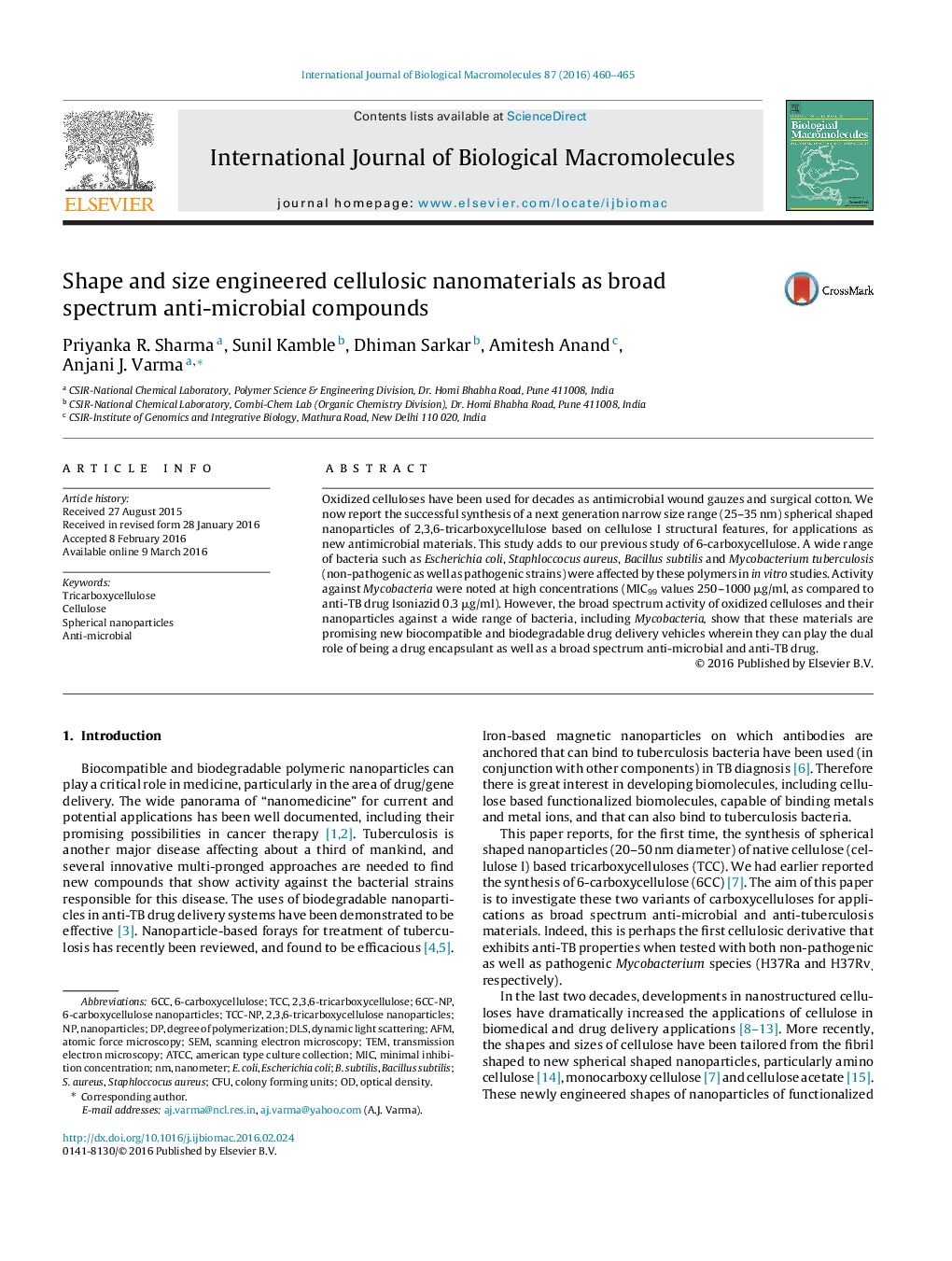| Article ID | Journal | Published Year | Pages | File Type |
|---|---|---|---|---|
| 1986225 | International Journal of Biological Macromolecules | 2016 | 6 Pages |
Abstract
Oxidized celluloses have been used for decades as antimicrobial wound gauzes and surgical cotton. We now report the successful synthesis of a next generation narrow size range (25-35 nm) spherical shaped nanoparticles of 2,3,6-tricarboxycellulose based on cellulose I structural features, for applications as new antimicrobial materials. This study adds to our previous study of 6-carboxycellulose. A wide range of bacteria such as Escherichia coli, Staphloccocus aureus, Bacillus subtilis and Mycobacterium tuberculosis (non-pathogenic as well as pathogenic strains) were affected by these polymers in in vitro studies. Activity against Mycobacteria were noted at high concentrations (MIC99 values 250-1000 μg/ml, as compared to anti-TB drug Isoniazid 0.3 μg/ml). However, the broad spectrum activity of oxidized celluloses and their nanoparticles against a wide range of bacteria, including Mycobacteria, show that these materials are promising new biocompatible and biodegradable drug delivery vehicles wherein they can play the dual role of being a drug encapsulant as well as a broad spectrum anti-microbial and anti-TB drug.
Keywords
AFM6-CarboxycelluloseTCCATCCMICB. subtilisBacillus subtilisCFUE. coliDLSS. aureusEscherichia coliTemMinimal inhibition concentrationdegree of polymerizationCelluloseAnti-microbialAmerican Type Culture CollectionSEMScanning electron microscopyTransmission electron microscopyatomic force microscopyNanoparticlesSpherical nanoparticlesnanometercolony forming unitsDynamic Light Scatteringoptical density
Related Topics
Life Sciences
Biochemistry, Genetics and Molecular Biology
Biochemistry
Authors
Priyanka R. Sharma, Sunil Kamble, Dhiman Sarkar, Amitesh Anand, Anjani J. Varma,
